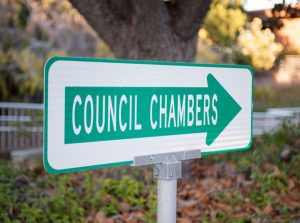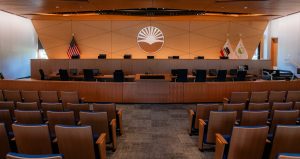Five Year Plan Shows Steady Revenue Growth, Surpluses
What a difference five years makes to Santa Clara’s five-year financial forecast. In 2010, the forecast was for City expenditures to grow to $178 million, while revenues lagged behind at $161 million, with about a $17 million deficit for the 2015-2016 fiscal year. Contributions to the California Public Employees Retirement System (CalPERS) were projected to grow to about 35 percent of salaries to $34 million, as a result of unfunded liabilities – the amount of that future obligations exceed the money currently available to pay them.
The picture in June 2015 is quite different.
Expenditures and revenues are expected to balance out $182 million. Revenues are expected to continue to outpace expenditures though 2020; with surpluses topping $9 million in 2016-2017, and narrowing to $2 million in 2020-2021.
What’s changing the picture is growing revenue, with sales tax (the City’s single largest revenue source) projected to grow about $14 million. Property tax revenue will grow $9 million (the City only receives about 20 cents of every dollar paid in property tax); charges for City services will grow modestly, by 2 million; enterprise (utilities) contributions to the general fund, by $3 million; and hotel tax by another $3 million.
The city has also instituted new efficiencies in the past year, that have helped the municipal bottom line. These include:
- The City Library’s new applications, technology and services to reduce staff time for handling fines, event registration and adding new material to collections.
- Social media for communications with residents and handling questions and complaints. This has enabled the Police Department to move officers from front desk operations to patrol, and will reduce overtime costs.
- A MySantaClara mobile app for iPhone and Android which, among other features, lets people get real-time traffic information and file reports (including graffiti complaints that include photos and location information).
- New public safety digital Incident Actions Plans (IAPs) for Levi’s Stadium that replace huge amounts of paper with a QR code that public safety staff can scan to see the full, digital report on a smartphone or tablet. The Fire Department is also collaborating with Sunnyvale for firefighter recruit training.
- On-board vehicle diagnostics and notifications for scheduled maintenance and inspections.
- Consolidating the Public Works and Streets departments.
City’s CalPERS Contributions, Unfunded Pension Liabilities to Decline – Slightly
What hasn’t changed since 2010 is the increasing toll on City finances taken by CalPERS contributions. Although the City’s unfunded CalPERS liability has dropped, as of 2013 (the most recent information available) the unfunded liability dropped from almost $400 million in 2012 to $379 million, after 10 years of unbroken increase. Better returns on CalPERS’ investment portfolio has given the City a reprieve from contribution rates of almost 35 percent of salaries and benefits to about 25 percent of salaries and benefits (40 percent of salaries alone).
Public employee pensions are guaranteed benefit plans – something that has been extinct in private business for almost 40 years. Retirees are guaranteed a fixed amount regardless of the performance of CalPERS’ investments, and employer and employee investments (which are fixed by the state and by union contracts). Although there have been changes in recent years, they won’t have any impact for decades because they only apply to future employees.
In the wake of the stock market boom in the late 1990s, CalPERS gave members the option of not making any contributions – an option that Santa Clara took. In 2001, the City’s CalPERS obligation was over-funded by $40 million.
When the stack market crashed in 2001, combined with the reality that people live a lot longer than CalPERS actuarial tables predicted they would, that surplus quickly morphed into a massive and growing deficit.











0 comments